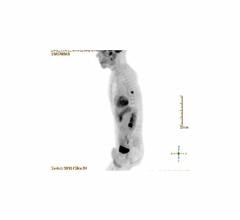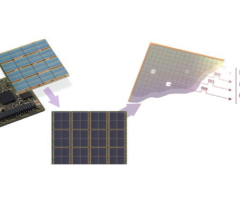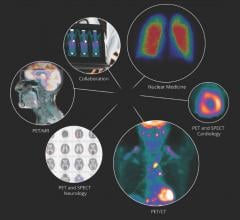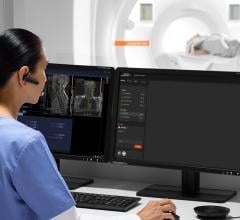May 8, 2019 – United Imaging Healthcare (UIH), an international leader in advanced medical imaging and radiotherapy ...
PET Imaging
Positron emission tomography (PET) is a nuclear imaging technology (also referred to as molecular imaging) that enables visualization of metabolic processes in the body. The basics of PET imaging is that the technique detects pairs of gamma rays emitted indirectly by a positron-emitting radionuclide (also called radiopharmaceuticals, radionuclides or radiotracer). The tracer is injected into a vein on a biologically active molecule, usually a sugar that is used for cellular energy. PET systems have sensitive detector panels to capture gamma ray emissions from inside the body and use software to plot to triangulate the source of the emissions, creating 3-D computed tomography images of the tracer concentrations within the body.
This week, cardiologists learned for the first time they have been examining black holes for decades and did not know it ...
March 22, 2019 — Assessing the patterns of energy use and neuronal activity simultaneously in the human brain improves ...
Digital technology is opening remarkable opportunities for clinical positron emission tomography (PET) about which ...
Raza Alvi, M.D., a research fellow in radiology at Massachusetts General Hospital, has been involved in a study of a ...
March 18, 2019 — A new study of positron emission tomography (PET) scans has identified a biomarker that may accurately ...
March 14, 2019 — A team of researchers at the University of Washington announced they developed a new automated system ...
Precision can have an enormous impact on patients. From diagnosis to patient monitoring (see “How Digital PET/CT Can ...
March 5, 2019 — Siemens Healthineers’ new Biograph Vision positron emission tomography/computed tomography (PET/CT) ...
February 13, 2019 — At the 2019 Healthcare Information and Management Systems Society (HIMSS) global conference and ...
Technological advancements in positron emission tomography/computed tomography (PET/CT) offer both clinicians and ...
PET is getting ready to venture outside oncology, cardiology and mainstream neurology. High on the list of new clinical ...
January 30, 2019 - ImaginAb Inc. announced the enrollment of the first patient in the Phase II clinical trial of the ...
January 23, 2019 — United Imaging Healthcare (United Imaging) announced U.S. Food & Drug Administration (FDA) clearance ...
Digital technology is opening remarkable opportunities for clinical positron emission tomography (PET) about which ...
Analog is approximate. Digital is specific. Therein lies the fundamental difference between digital PET and its analog ...
December 5, 2018 — Subtle Medical announced 510(k) clearance from the U.S. Food and Drug Administration (FDA) to market ...
December 4, 2018 — Mirada Medical, a leading global brand in medical imaging software, will form part of an artificial ...
November 25, 2018 — During the 104th Scientific Assembly and Annual Meeting of the Radiological Society of North America ...
November 14, 2018 — Artificial intelligence (AI) technology improves the ability of brain imaging to predict Alzheimer’s ...
November 13, 2018 — The Radiological Society of North America (RSNA) Research & Education (R&E) Foundation recently ...
November 13, 2018 — At the 2018 Radiological Society of North America annual meeting (RSNA 2018), Nov. 25-30 in Chicago ...
The Radiological Society of North America (RSNA) Research & Education (R&E) Foundation awarded the 2018 Hitachi ...
Precision can have an enormous impact on patients. From diagnosis to patient monitoring (see “How Digital PET/CT Can ...


 May 08, 2019
May 08, 2019 






















